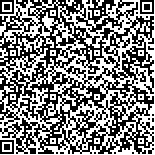下载中心
优秀审稿专家
优秀论文
相关链接
摘要

高光谱遥感是当前地质遥感研究的前沿和热点,国内外的相关研究集中在数据处理、矿物填图、模型构建等方面,利用航空高光谱遥感技术进行区域成矿背景的研究较少。然而,要解决好高光谱遥感找矿问题,首先必须研究区域成矿背景,特别是找矿方向和有利的找矿区段,否则构建的找矿模型将不能充分发挥作用。本文以核工业北京地质研究院国家级遥感重点实验室装备的航空高光谱成像系统在甘肃柳园-方山口地区获取的可见光-近红外(CASI),短波红外(SASI)高光谱遥感数据为数据源,利用矿物填图方法所填的区域矿物分布图,探讨了柳园-方山口地区的区域成矿条件,厘定了找矿要素,构建了区域成矿构造格架,分析了区域已知矿产的空间分布规律,探索了该区的区域找矿方向和最佳找矿地段。在此基础上,利用建立的高光谱遥感找矿预测方法,新发现了7处找矿靶区,取得了显著的地质找矿效果。该成果不仅对指导柳园-方山口地区进一步找矿有重要作用,而且提出的一套高光谱遥感技术研究区域成矿背景的思路、途径和方法,对其他地区的高光谱遥感地质应用也具有重要的借鉴价值。
Hyperspectral remote sensing technology has recently been a topic of interest in remote sensing studies, which attracts attention. Previous studies focus mainly on data processing, mineral and lithological mapping, and modeling, and have paid little attention on regional metallogenic background. The regional metallogenic background, especially the area that is favorable for mineralization, is significant to ore exploration. Without regional metallogenic background, hyperspectral remote sensing cannot be used effectively. This paper discusses about ore exploration criteria and mineralization elements. This study establishes structural framework of the Liuyuan-Fangshankou area. This study is based on the airborne hyperspectral remote sensing image obtained by using the CASI/SASI/TASI imager of the National Key Laboratory of Science and Technology on Remote Information and Image Analysis. The structural framework was established based on visual interpretation, and the geological background was analyzed based on expert knowledge. These information were successfully used to explore mineralization-favorable areas and provided several prospects for the Liuyuan-Fangshankou area. Hyperspectral remote sensing is important in understanding regional and geological background and exploration.

